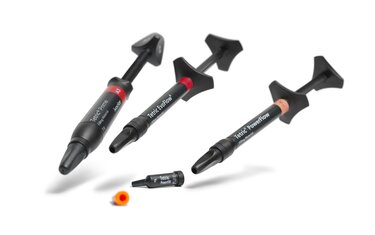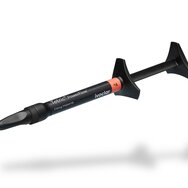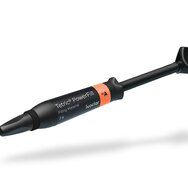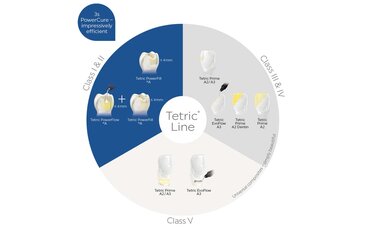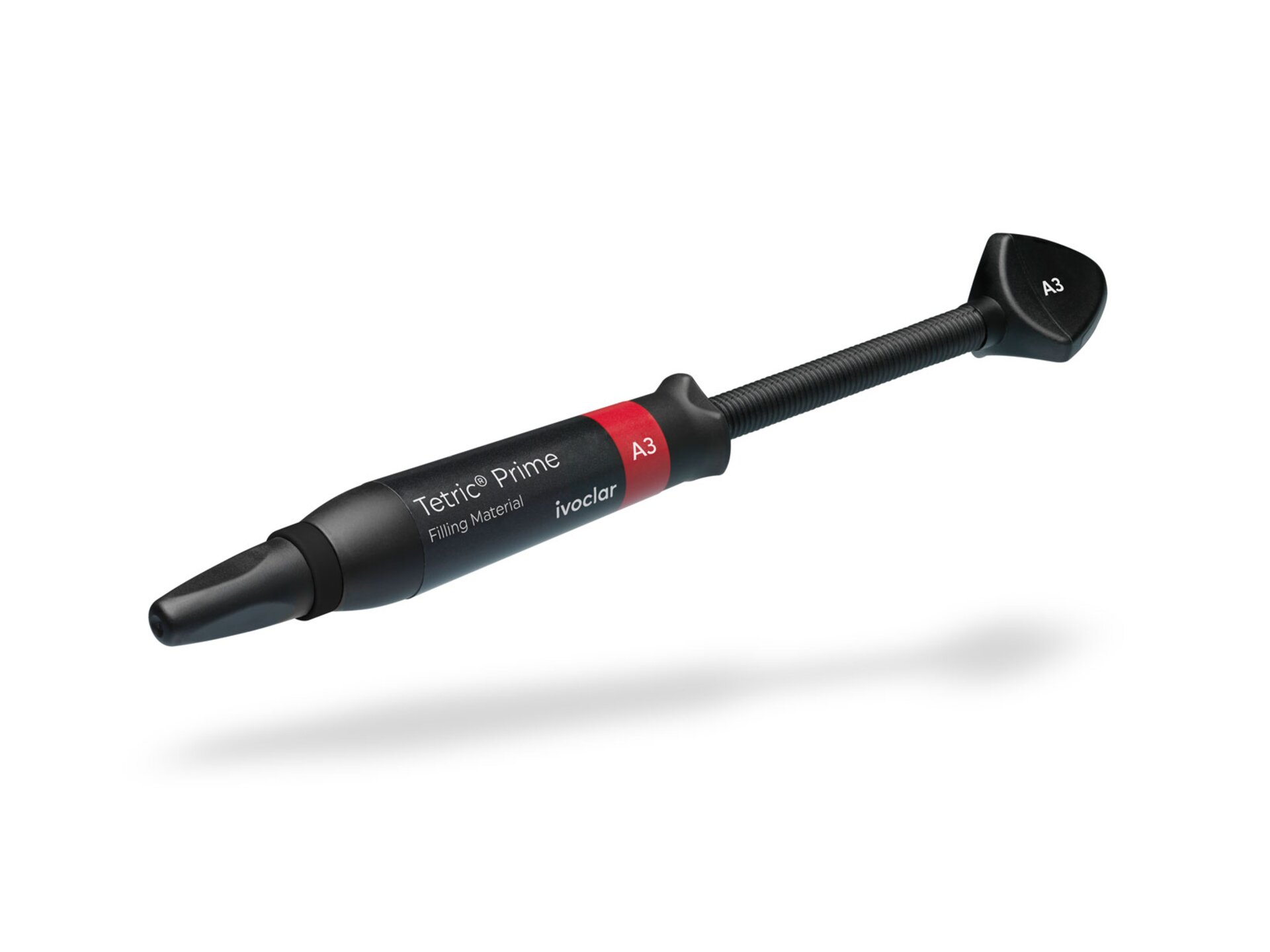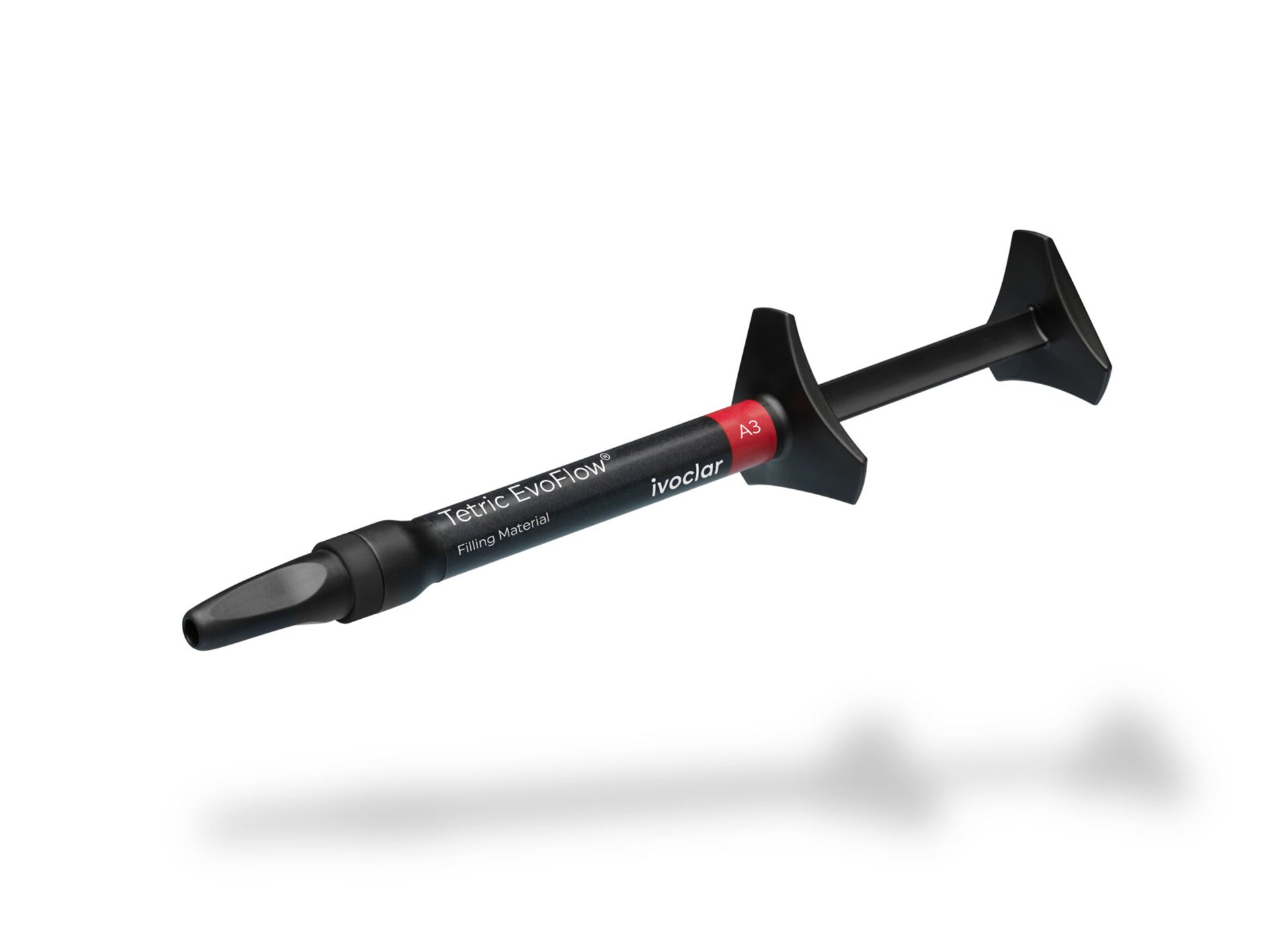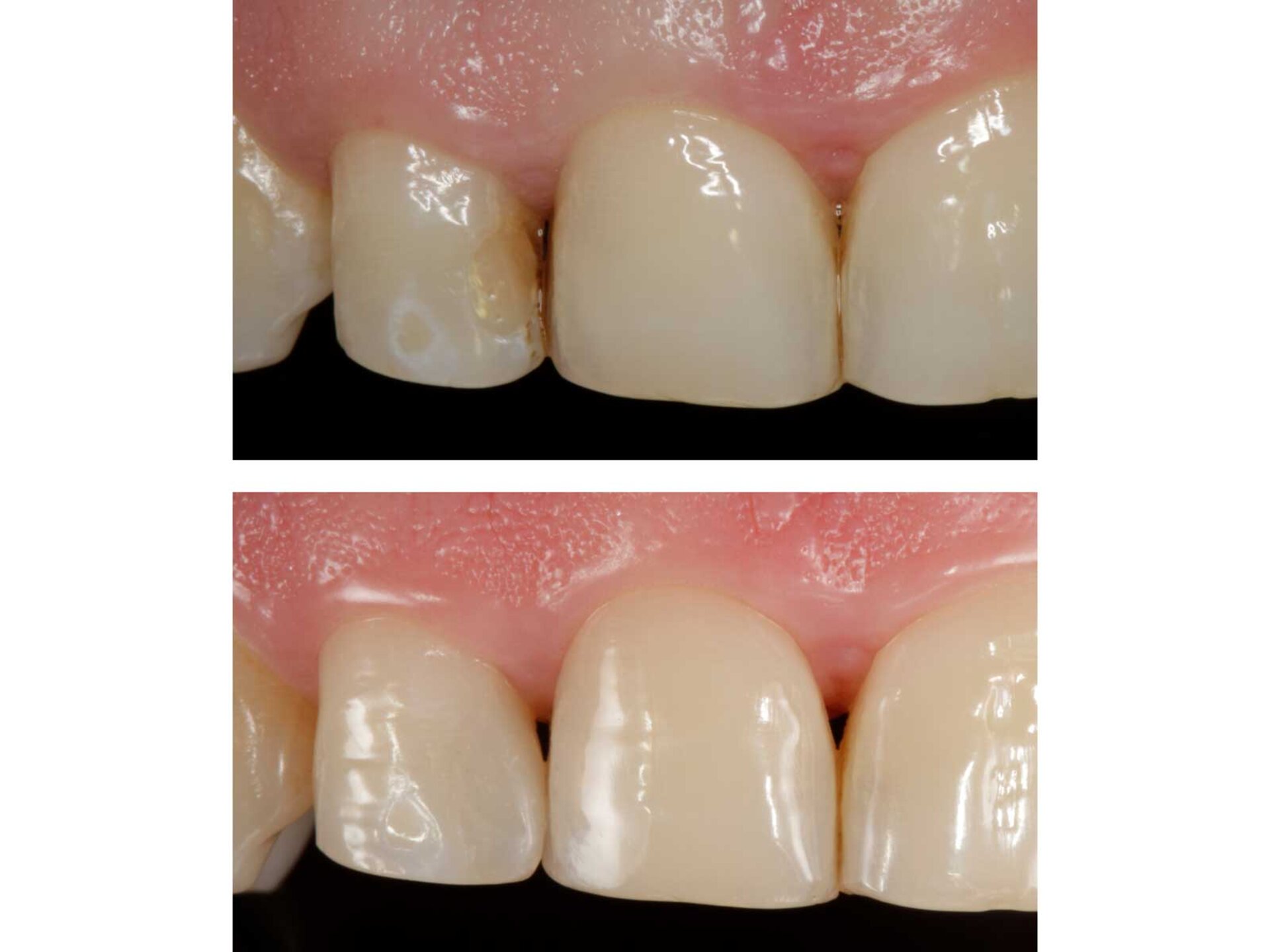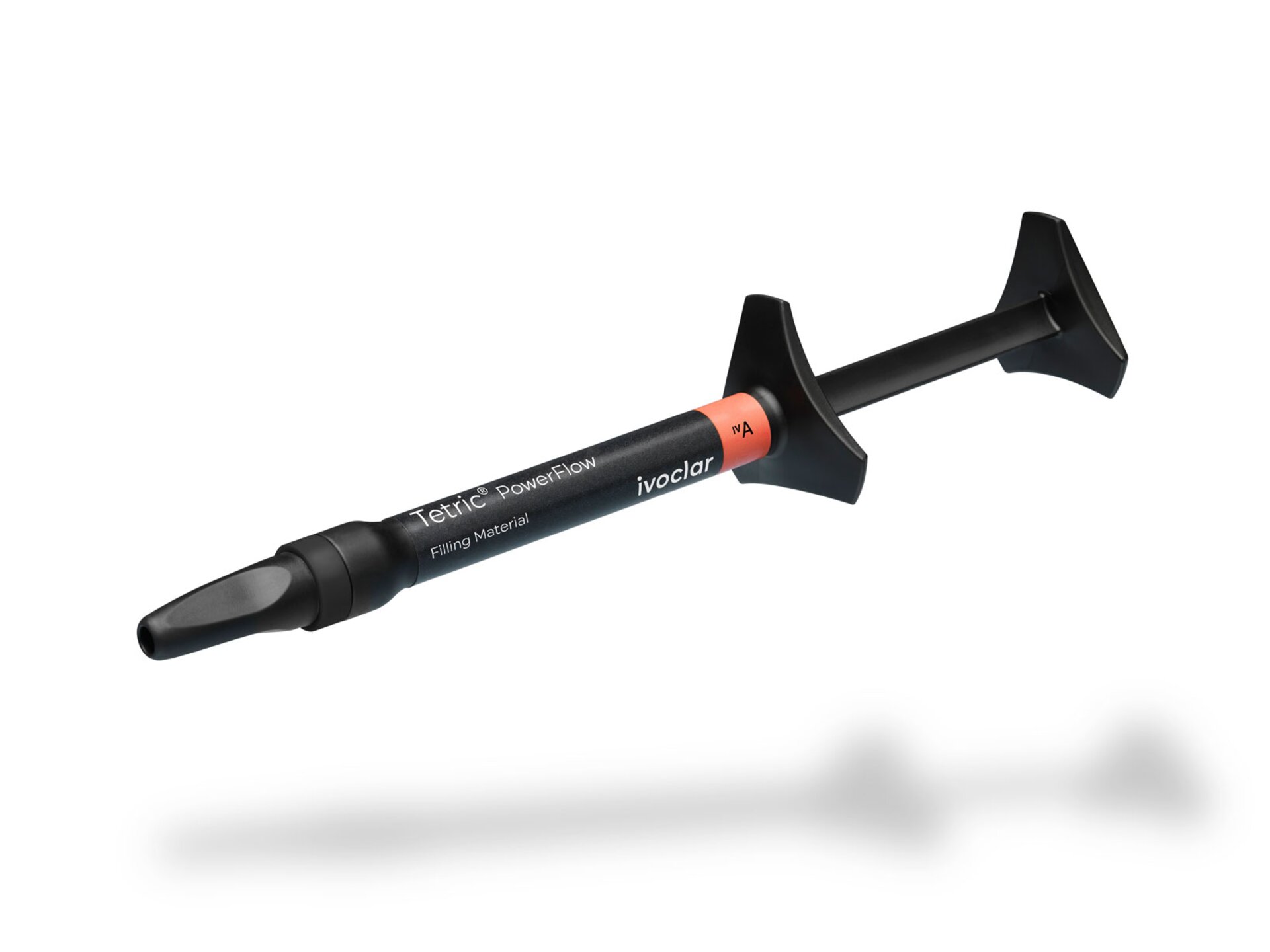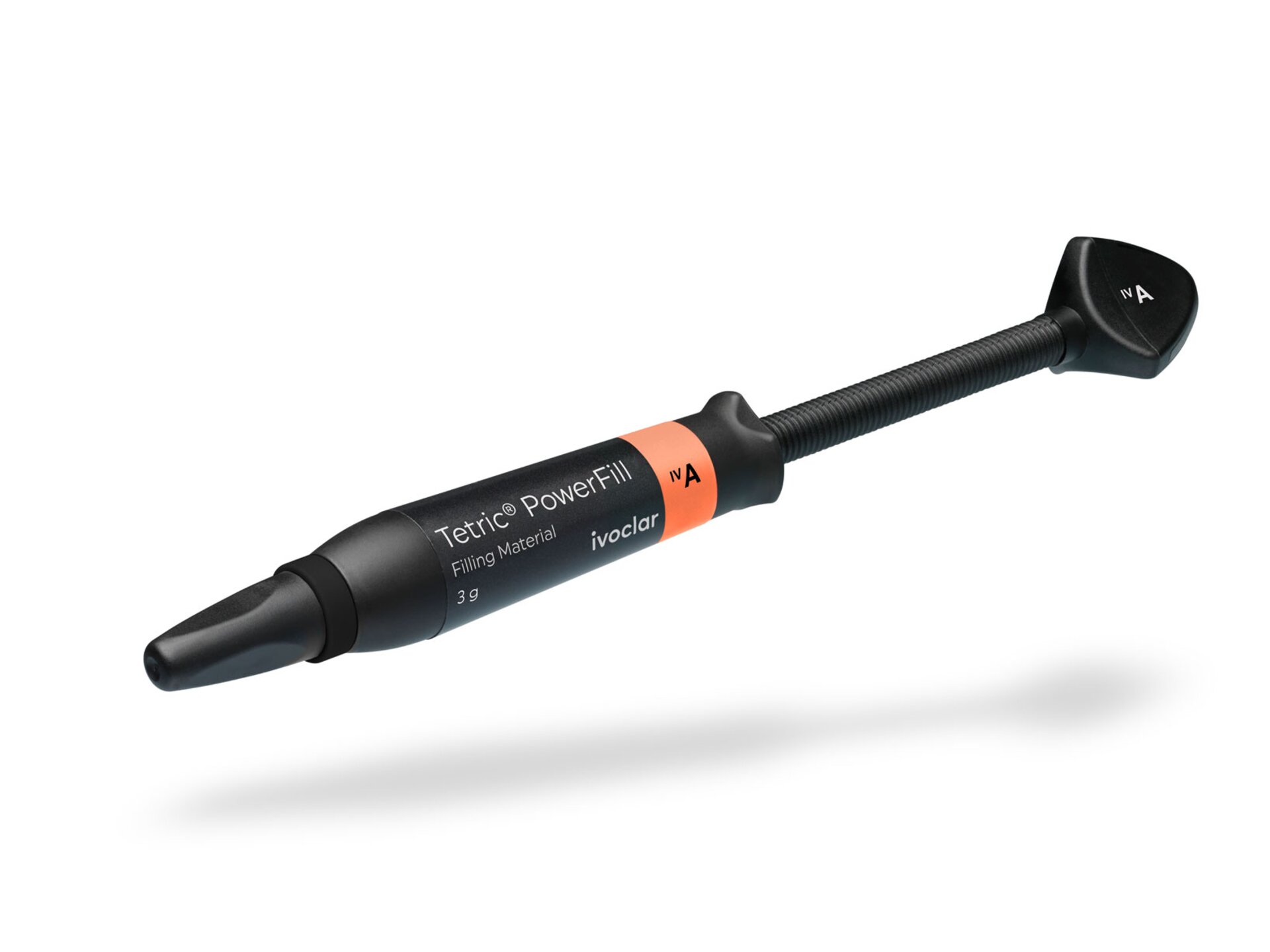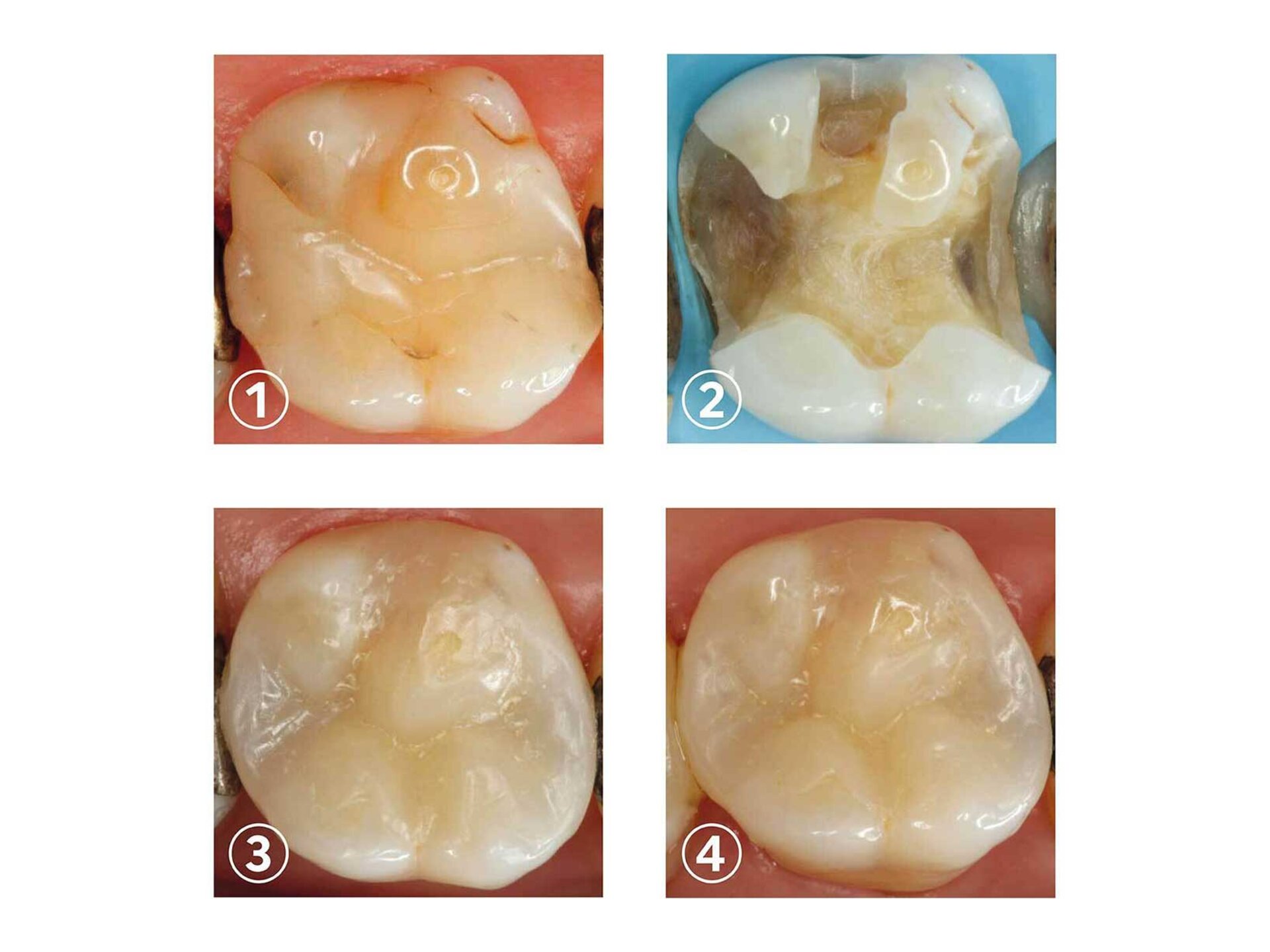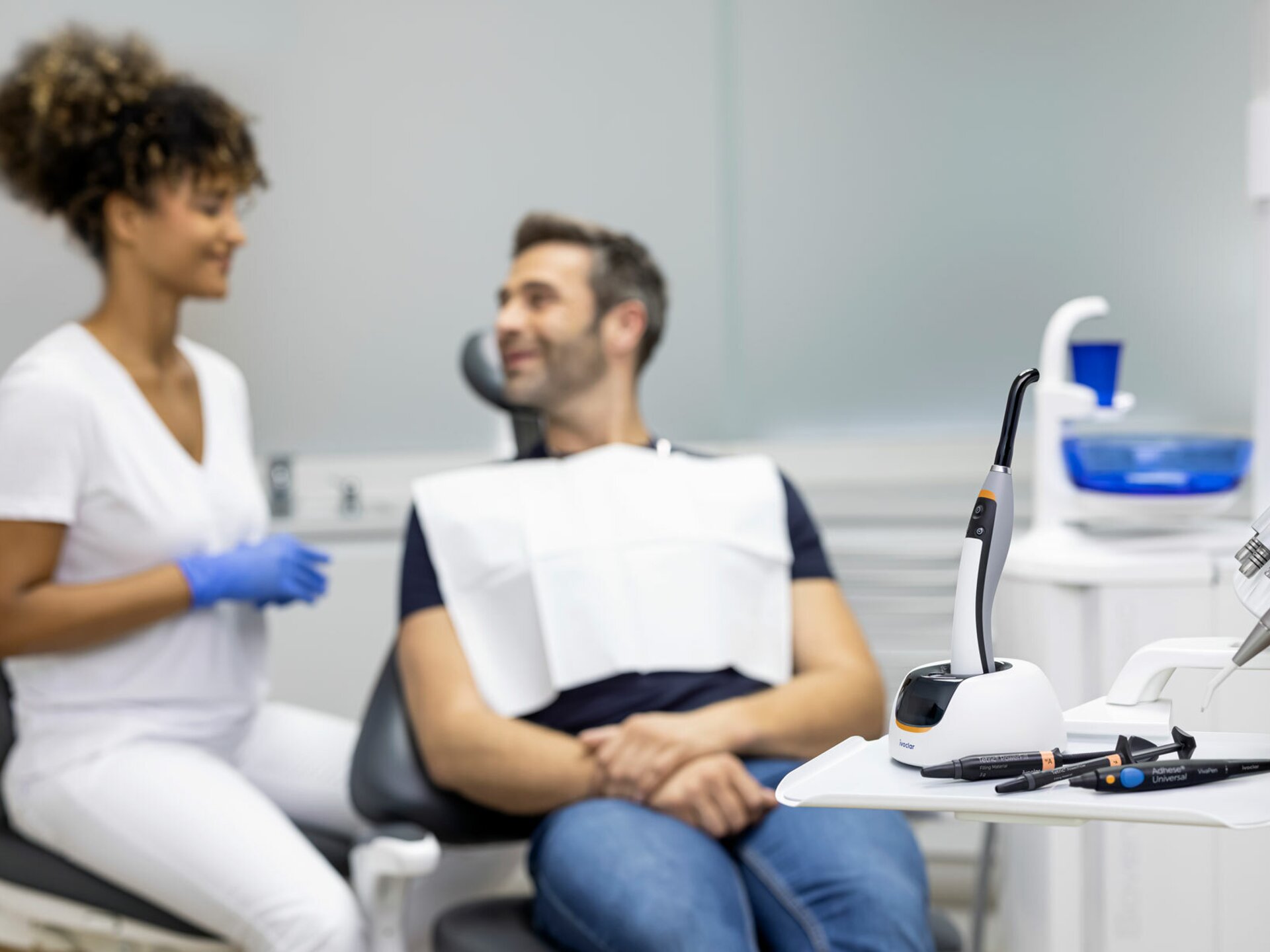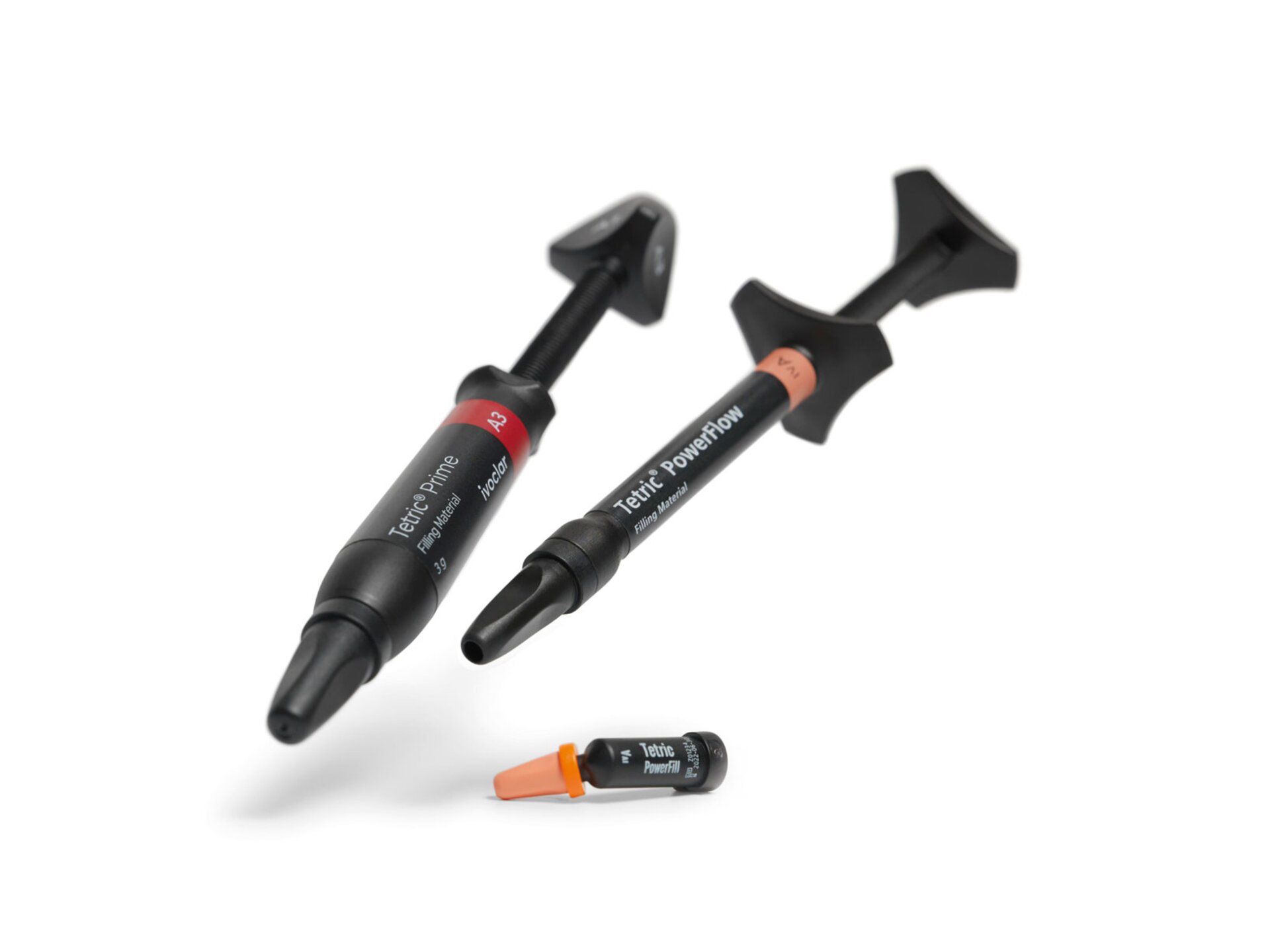Modern composites in tried-and-tested quality
The Tetric Line is comprised of four coordinated composites for direct restorative treatment. It combines tried-and-tested quality with modern technology.
To date, more than 730 million restorations have been placed with Tetric throughout the world.[1] You can rely on our tried-and-tested restorative materials that stand out for their exceptional esthetics, proven quality and high level of efficiency.
- esthetic results in both anterior and posterior teeth
- natural-looking restorations in anterior teeth with Tetric Prime and Tetric EvoFlow
- true-to-nature esthetics in the posterior region with Tetric PowerFill and Tetric PowerFlow
- more than 730 million restorations[1] placed throughout the world
- based on Tetric EvoCeram, which has enjoyed more than 15 years of clinical success
- easy handling
- minimal susceptibility to fracture due to high flexural strength[2]
- due to their high radiopacity, the materials are clearly visible on X-rays
- all the different consistency and shade variants of the Tetric Line can be effectively combined
- short light exposure times
- time savings of up to 51% with the 4-mm composites when the 3s PowerCure product portfolio is used[3]
Discover the Tetric Line
The material’s pronounced chameleon effect and excellent handling properties make it particularly suitable for rebuilding lost tooth structure in the highly visible anterior region. In most cases, you will need to apply only one shade-matched material to achieve a lifelike esthetic result.
Esthetics – Quality – Efficiency
- Natural shade blend due to the pronounced chameleon effect
- Universally applicable enamel shades for small defects and direct veneers
- Dentin shades showing low translucency for restoring large defects and fulfilling high esthetic expectations
- Excellent handling properties: easy to contour as a result of low stickiness, good spreadability and creamy consistency
- Efficient polishability for a lustrous surface
- Easy to distinguish on X-rays due to high radiopacity
How does natural shade blend work?
As a result of the special monomer and filler blend of our universal composites, the materials are capable of adapting their light-optical properties to those of the surrounding tooth structure.
Tetric EvoFlow is characterized by its pronounced chameleon effect and excellent handling properties. Tetric EvoFlow can be applied precisely and is therefore suitable for creating minimally invasive anterior restorations and for use as a liner.
Esthetics – Quality – Efficiency
- Natural shade blend due to the pronounced chameleon effect
- Universally applicable enamel shades for small defects and cervical restorations
- Dentin shades featuring low translucency for concealing stains and for fulfilling demanding esthetic expectations
- Precise application due to thixotropic consistency
- Can be used as a liner in combination with Tetric Prime
- Easy to distinguish on X-rays due to high radiopacity
- Efficient and easy polishing
Tetric EvoFlow has a thixotropic consistency
It is flowable under pressure, yet it remains stable when handled. It therefore enables you to work with high precision. This characteristic allows the product to adapt closely to narrow and thinly tapering areas. The product remains in place where it has been applied.
How does natural shade blend work?
As a result of the special monomer and filler blend of our universal composites, the materials are capable of adapting their light-optical properties to those of the surrounding tooth structure.
The material is characterized by low shrinkage, optimum flexural strength and reliable depth of cure. This makes the clinical performance of Tetric PowerFlow just as impressive as that of conventional composites. As a result of its great adaptation to cavity walls, the product is suitable for the efficient treatment of deep cavities. We recommend using Tetric PowerFlow in combination with Tetric PowerFill. It can also be used in conjunction with Tetric Prime.
Esthetics – Quality – Efficiency
- True-to-nature esthetics for posterior restorations due to Ivocerin and Aessencio Technology
- Reliable curing of increments of up to 4 mm in thickness
- Low susceptibility to process-related air entrapment
- Great adaptation to cavity walls and fast volume replacement because of outstanding flow properties
- Short light exposure times from 3 seconds
- Effective combination with Tetric PowerFill and Tetric Prime
Patented light initiator Ivocerin[4, 5] and Aessencio Technology
Ivocerin ensures a reliable depth of cure of composite layers of up to 4 mm. The Aessencio Technology is responsible for gradually increasing the opacity of the initially translucent 4-mm composites during the light polymerization process. Ultimately, the materials attain the translucency levels of enamel and dentin and therefore assume a true-to-nature esthetic appearance.
Tetric PowerFill is characterized by reliable depth of cure, low shrinkage and optimum flexural strength[2]. In short: The clinical performance of Tetric PowerFill is just as impressive and the results are just as esthetic[6] as those achieved with conventional composites. The low stickiness of Tetric PowerFill facilitates the creation of anatomical structures.
Esthetics – Quality – Efficiency
- True-to-nature esthetics for posterior restorations due to Ivocerin[4, 5] and Aessencio Technology
- Excellent margin quality in combination with Adhese Universal
- Reliable depth of cure of increments of up to 4 mm in thickness
- Low susceptibility to process-related air entrapments[7]
- Easy creation of anatomical structures because of low stickeness
- Short light exposure times from 3 seconds
- Can be combined with Tetric PowerFlow
Patented light initiator Ivocerin[4, 5] and Aessencio Technology
Ivocerin ensures a reliable depth of cure of composite layers of up to 4 mm. The Aessencio Technology is responsible for gradually increasing the opacity of the initially translucent 4-mm composites during the light polymerization process. Ultimately, the materials attain the translucency levels of enamel and dentin and therefore assume a true-to-nature esthetic appearance.
Tetric PowerFill and Tetric PowerFlow will increase the efficiency of your workflow – whilst maintaining your customary high quality and esthetic standards. Your patients will be pleased, because shorter treatment times mean less stress and discomfort for them.
Streamlined treatment protocol
Since you can apply Tetric PowerFill and Tetric PowerFlow in increments of up to 4 mm, you will need to use fewer layers compared with conventional filling techniques. Fewer increments means having to switch less between the composite, the modelling instrument and the light-curing device – whilst achieving the same high-quality treatment results as with conventional layering techniques.
Light exposure times from 3 seconds
Modern curing lights such as Bluephase® PowerCure deliver up to 3,000 mW/cm2. Consequently, the required polymerization time can be reduced to 3 seconds. Tetric PowerFill and Tetric PowerFlow in layers of up to 4-mm thickness can be cured in only 3 seconds.
Save up to 51% on treatment time with 3s PowerCure products
Reduce your treatment time in the posterior region by up to 51%[6] and gain valuable time for yourself and your patients. Learn more
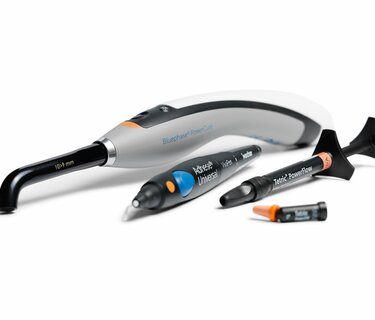
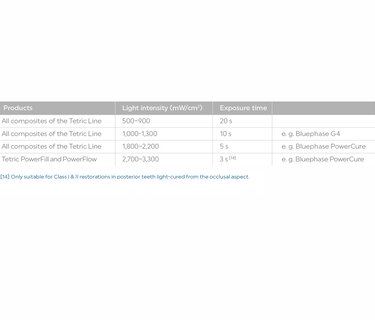
* Cavity classes I–V according to G. V. Black
[1] Based on worldwide sales figures for the Tetric product line
[2] According to ISO 4049
[3] Only suitable for Class I & II restorations in posterior teeth light-cured from the occlusal aspect
[4] Ganster B et al., Macromolecular Rapid Commun. 2008, 29, p. 57-62.
[5] Ganster B et al., Macromolecules 2008, 41, p. 2394-2400.
[6] In the posterior region
[7] Hirata R, Operative Dentistry 2018, 43-2, p. 144-150, additional data on file.
